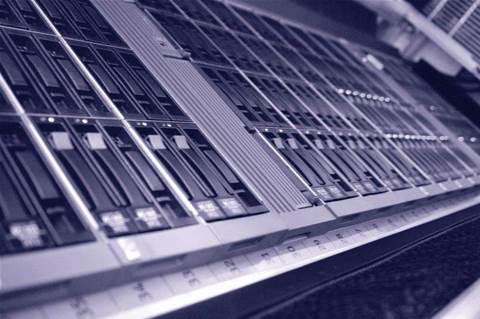The benefits of the technology became apparent as each site was rolled out. “The first benefit we saw was that the appliances did what they were expected to do, which was providing good application performance,” said Cowman.
Another benefit which HBOS Australia wasn’t seeking with the deployment of the technology but it now values highly is the Riverbed appliances have reduced the amount of traffic on the network which allows for more effective use of the group’s WAN links. “If you’re cost conscious as an organisation it does mean you can reduce some of your WAN costs,” said Cowman.
“In our case one of the important things for us was to make sure these things were cost effective and they would pay for themselves – and they do. We had a formula we worked internally in terms of how do we justify putting a unit there based on WAN costs, we ran the formula, applied it and basically justified why we should put these boxes out there as opposed to getting more bandwidth and we’ve been quite successful doing that. “We now do regular capacity reviews and we look at each link and the Riverbeds definitely reduce the volume of traffic and provide a more acceptable performance to end users. We haven’t put it in any traffic shaping requirements. We’ve plugged the boxes in the middle of the network and they start caching traffic and optimising and by doing that they reduce the volume of traffic being transmitted.”
Another side benefit for HBOS Australia of the Riverbed implementation is the unprecedented visibility the technology gives into the group’s network said Riverbed’s technical lead on the project, Damien Murphy. “By putting the Steelheads out there HBOS actually found out a lot more about their network. We actually proved out other things such as one instance where there was a problem with a Lotus Notes backend which HBOS had connectivity problems with. Because the Steelheads have full monitoring capability they were able to see what was happening between the server and the client and analyse the problem.”
Cowman stresses, however, that HBOS Australia’s implementation was never about saving costs or improving network manageability. “Deploying the Riverbed technology was about performance, giving branch staff systems that would work the way we want them to work. If you have a fairly static environment, a fairly strong baseline it would be fairly easy to work out a really good ROI, dropping every WAN link by 25 to 30 percent etc but if you’re an organisation that is going through rapid growth, aggressive expansion and adding more and more systems and functionality on a regular basis then it’s very hard to do that. Additionally, if you got aggressive on carriage costs you might make the business suffer in other areas such as performance.”
Once such technology has been implemented it is usually just the start of things and HBOS Australia is no exception. The group is now testing the Riverbed Steelhead Mobile client software to support its large mobile workforce, as well as investigating the possibility of using high-end Steelhead appliance platforms to streamline disaster recovery in its data centres.
And that is just the start said Cowman. “Essentially, Riverbed boxes are a server that runs a proprietary operating system that does some very smart things and there are future product releases coming through that will leverage the fact that there is a server sitting in the network that can also be leveraged to do other things.
“We don’t do anything like that yet but there are opportunities to do things more cleverly. For example, if you have a large distributed network, authentication is always a challenge because you have multiple domain controllers in your environment. So if you open a new branch with 40 or 50 people you’re faced with the decision, do I put another server out in my network for them to authenticate against? The obvious question we would ask Riverbed is whether there is something clever we can do with the Riverbed server for authentication.”
Another possibility is print servers. “One of the functions Riverbed does do is a print server, so if printing was important enough to put a server out there just for print serving, using the Riverbed would be an opportunity to remove 170 servers from the network. We don’t use it for that and we don’t have 170 print servers but it is an example of what can be done.”
Ultimately, however, Cowman believes that WAN acceleration technology is a bread and butter component of modern IT infrastructure.
“From an infrastructure perspective you know when WAN acceleration is doing its job because you don’t hear anything about it. It’s one of those bread and butter things that sit in the background and end-users don’t know about it unless it goes wrong.
“Just recently we had a power failure and a Steelhead went off the air. We immediately got complaints of poor performance on the network but once it was restarted performance picked up again.
“It’s a bit like having a turbo on an engine, you know when it has kicked in and you know when it’s not working,” he added.
Optimising the network
By
Darren Baguely
on Jun 24, 2008 3:28PM

Page 2 of 2 | Single page
Got a news tip for our journalists? Share it with us anonymously here.
Partner Content

Channel faces AI-fuelled risk as partners lag on data resilience, Dicker Data summit told

Tech Buying Budgets for SMBs on the Rise

Promoted Content
From Insight to Opportunity: How SMB Service Demand is Shaping the Next Growth Wave for Partners

Tech Data: Driving partner success in a digital-first economy
_(11).jpg&h=142&w=230&c=1&s=1)
The Compliance Dilemma for Technology Partners: Risk, Revenue, and Reputation




.jpg&w=100&c=1&s=0)
_(8).jpg&w=100&c=1&s=0)







.jpg&q=95&h=298&w=480&c=1&s=1)
.jpg&q=95&h=298&w=480&c=1&s=1)
.jpg&q=95&h=298&w=480&c=1&s=1)



